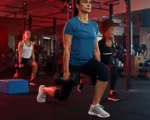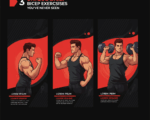Tennis is a dynamic, physically demanding sport that requires agility, strength, and precision. Whether you’re a seasoned player, a coach, or a sports enthusiast hitting the court recreationally, injuries can happen. Knowing the most common tennis injuries and how to prevent them can keep you playing your best game.
Common Tennis Injuries
1. Tennis Elbow
You’ve likely heard of tennis elbow, a common overuse injury caused by repetitive wrist and arm movements. The pain typically occurs on the outer part of the elbow and is a result of inflammation or chronic stress on the tendons.
Prevention Tips:
- Strengthen forearm and wrist muscles with targeted exercises.
- Use proper grip technique and choose a racket with an ideal grip size.
- Incorporate rest days to avoid overuse.
2. Rotator Cuff Injuries
Tennis requires an extensive range of motion in the shoulders, putting strain on the rotator cuff tendons, which can lead to tendinopathy, impingement, or even tears. These injuries are often the result of repetitive serving motions or compensating for muscle weaknesses elsewhere in the body.
Prevention Tips:
- Strengthen chest, shoulders, and upper back muscles.
- Work on shoulder flexibility and proper posture.
- Use a proper serving technique to reduce strain on the joint.
3. Ankle Sprains
Tennis players make quick sprints and sharp lateral movements, increasing the risk of spraining the ligaments in the ankle. This type of acute injury can lead to swelling, pain, and instability.
Prevention Tips:
- Practice balance and ankle-strengthening exercises.
- Warm up thoroughly to increase blood flow to the muscles.
- Wear tennis-specific shoes with good lateral support.
- Consider using ankle braces if you’re prone to sprains.
How to Prevent Tennis Injuries
Reducing the risk of injury isn’t just about avoiding falls or incorrect movements. It’s about taking care of your body holistically. Here’s how you can stay injury-free on the court:
1. Strengthen and Stretch
Building strength and flexibility not only enhances your performance but also reduces the likelihood of overuse injuries:
- Core and Hips: Your torso generates power during swings and stabilizes your movements. Incorporate exercises for core strength and hip abductors.
- Upper Body: Use shoulder-strengthening programs to improve range of motion and stability.
- Elbow and Wrist: Strengthening these areas lessens the stress on tendons, reducing the risk of injuries like tennis elbow.
- Ankles: Include balance exercises and consider using supportive braces if needed.
2. Always Warm Up and Cool Down
A proper warm-up prepares your muscles for the demands of tennis by increasing blood flow and flexibility. After playing, a thorough cooldown promotes recovery.
Warm-up ideas:
- Light jogging or dynamic stretches.
- Arm circles and shoulder stretches for mobility.
Cool-down ideas:
- Gentle stretching of key muscle groups.
- Basic yoga poses to relax and lengthen worked muscles.
3. Use the Right Equipment
The wrong equipment can exacerbate strain on your body. Here’s what to look for:
- Racket: Match your grip size to your hand and ensure proper string tension.
- Footwear: Tennis-specific shoes with lateral support will protect you during sudden pivots and stops.
- Accessories: Ankle braces or wrist supports, if needed, can offer extra stability.
4. Listen to Your Body
Pushing through pain can turn minor issues into serious injuries. If you feel discomfort, especially in your elbow, shoulder, or ankle, don’t ignore it. Rest, assess, and consult a medical professional if needed.
5. Mix Up Your Activities
Overuse injuries often occur when you focus solely on tennis. Diversify your physical activity with complementary sports or exercises, such as swimming or cycling, to build overall strength and stamina.
Play Smart, Stay Healthy
Tennis is a sport that requires skill, endurance, and precision. By recognizing the risks and taking preventive measures, you can minimize your chances of injury and keep enjoying the game you love.
If you’re dealing with recurring pain or want further guidance, consult a sports medicine expert to create a personalized injury prevention plan tailored to your needs. Knowledge, preparation, and care are your best tools to stay at the top of your game!








